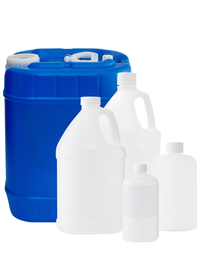EDTA
EDTA
Also Known As Ethylenediaminetetraacetic Acid
About EDTA
EDTA, or Ethylenediaminetetraacetic Acid with the formula [CH₂N(CH₂CO₂H)₂]₂., is a white, colorless crystal that is minimally soluble in water. It is often available in salt form, including tetrasodium EDTA, disodium EDTA, and sodium calcium edetate, all of which function similarly as sources of EDTA.

EDTA is a common chelating agent, which means it binds strongly to metal ions to form stable, water-soluble compounds. This function lends itself to widespread applications. For example, EDTA may be added as a stabilizer to foods or cosmetic products in order to sequester metal ions that would otherwise act as catalysts towards the production of harmful or undesirable products (e.g. discoloration, carcinogens). In other cases, EDTA can improve the solubility of otherwise insoluble metals; for example, in agricultural applications, EDTA can improve iron bioavailability to plants. It has also been used for chelation therapy, to treat heavy metal poisoning. EDTA products are used for hair, skin, chelation, endodontics, in food, in skincare, shampoo and dentistry.
Common Uses and Applications
- Therapeutic metal chelating agent
- Blood anticoagulant
- Personal care products
- Detergents
- Chemical analysis reagent
- Food preservative












